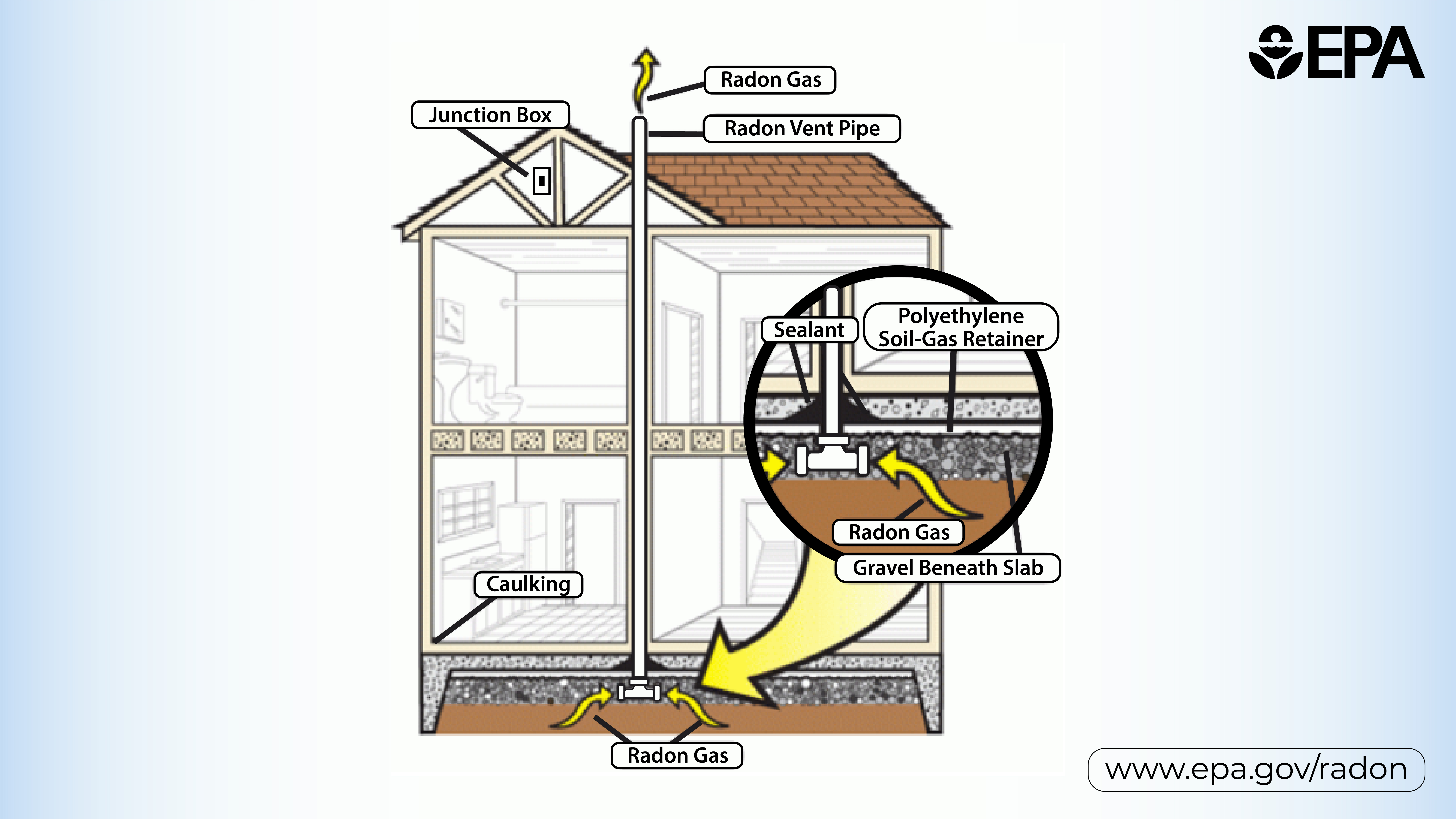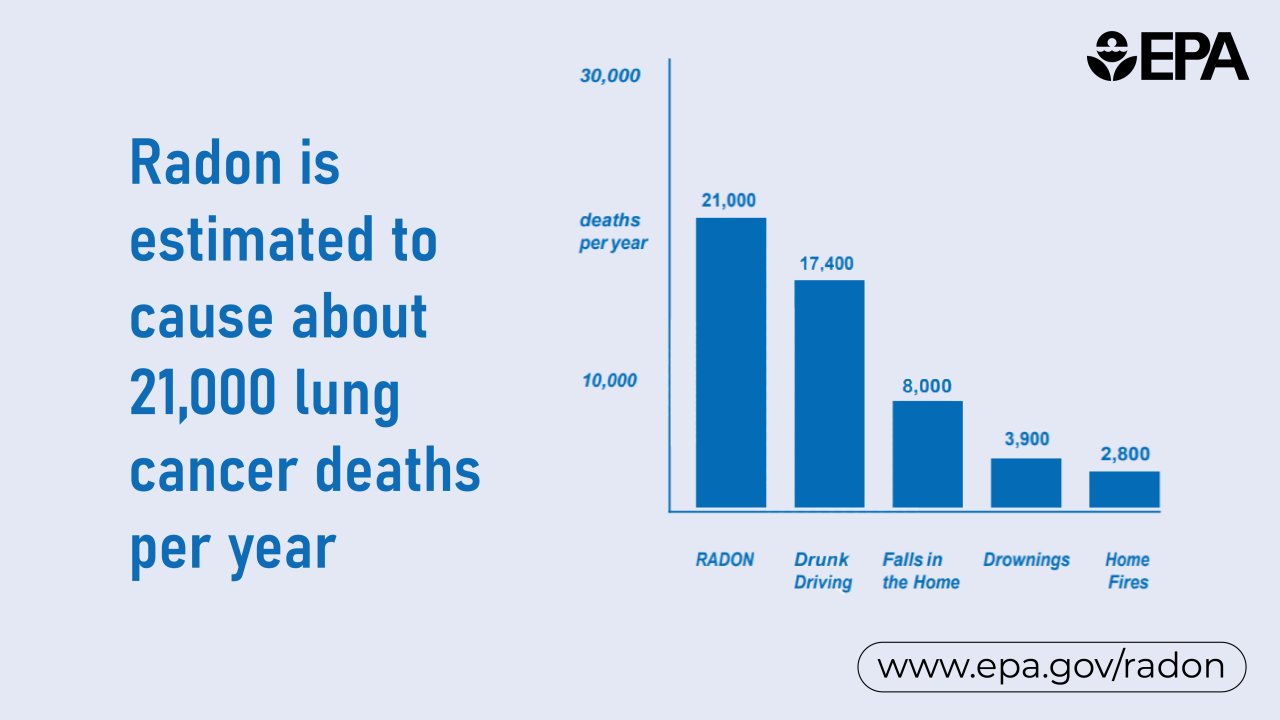
Did you know that radon is the second leading cause of lung cancer?
You may not think about radon or its dangers that often, but now is the perfect time to start. Observed every January, National Radon Action Month serves as a reminder to make sure your home is radon-free. The US Environmental Protection Agency (EPA) ranks indoor radon among the most serious environmental health problems affecting indoor air quality.
What is Radon?
Radon is an invisible, odorless, radioactive gas produced when uranium in soil decays. Naturally, this makes it difficult to detect. It can seep up from the ground and into your home through construction joints, cracks and holes in the foundation, or the water supply. As radon gets trapped inside, it negatively affects your indoor air quality. Radon levels are usually higher in basements or cellars, but can also be found upstairs in homes.

The concentration of radon in a home depends on several factors, including:
- Local geology—while high levels of radon are found in every state, some types of rock and soil contain more uranium than others
- Routes that are available for radon to move from the soil into the house
- Building materials used
- How airtight a building is
The EPA estimates that one out of every 15 homes contains elevated radon levels.
The Health Risks of Radon
Radon gas decays into radioactive particles that get trapped in your lungs when you breathe, damaging lung tissue in the long-term. According to the EPA, radon exposure is the leading cause of lung cancer deaths among nonsmokers in America, claiming the lives of an estimated 21,000 Americans each year.
The chance of getting lung cancer from radon depends on:
- How much radon is in your home
- The amount of time you spend in your home
- If you are a smoker, or have ever smoked
There are no immediate symptoms associated with radon exposure. While the EPA has so far found no evidence that radon causes pediatric asthma, several recent studies suggest that radon could be an environmental trigger for people already diagnosed with asthma.

How to Protect Your Home From Radon
As a preventable health risk, exposure to radon can be avoided with a simple test. But how do you test radon levels? And what should you do if you discover elevated radon levels?
First, know that testing radon levels is quick, easy, and inexpensive, whether you take the DIY approach and use a testing kit or decide to hire a professional. Remember that any building can have high levels of radon, no matter if it is new or old, large or small, well-sealed or drafty, or with or without a basement.
If you are planning to move, ask about radon levels before buying or renting a home. If you have children, ask if their school buildings have been tested for radon.
For DIY testing, you can purchase a discounted radon kit (about $17-27) available from Kansas State University’s National Radon Program Services. Also, you can often find radon testing kits at home improvement stores. Finally, look into your state’s radon program about obtaining a radon test kit, as some states make kits available to the public for free or at a reduced price. The package instructions will explain how to properly place the testing device and where to send your results.
If you’d rather hire someone to test for radon—or if you need a qualified professional to fix the problem should you discover elevated radon levels in your home—simply contact your state radon program to locate a professional radon inspector in your area. You can also call the National Radon Hotline at 1-800-SOS-RADON for more information.
Improve Your Home’s Indoor Air Quality
Testing your home for radon is the first step to improving indoor air quality for your family. Radioactivity is measured in picocuries. The average indoor radon level in the US is estimated to be about 1.3 picocuries per liter (pCi/L), and about 0.4 pCi/L of radon is normally found in the outside air.
While there is no known safe level of radon, reducing radon levels reduces the risk of negative health impacts. The EPA recommends taking action to reduce radon levels if a test shows elevated radon levels in your home at or above 4 pCi/L. If your home tests high for radon, hire a professional who is trained to mitigate the problem.
The good news is that even homes with very high levels of radon can be reduced to safer levels that improve environmental health. Radon levels can be reduced by:
- Increasing ventilation under floors
- Installing a radon sump system in the basement
- Preventing radon from passing from the basement into living spaces
- Sealing floors and walls
- Improving ventilation in the building
This Radon Action Month, follow the EPA’s advice to “Test. Fix. Save a life.” Maintaining healthy indoor air quality will become even more critical as climate change continues to make common indoor air pollutants more widespread and more severe.
To learn more about improving indoor air quality in your home, read NEEF’s guide to Healthy Indoor Air Quality in a Changing Climate and our resource on Five Common Indoor Asthma Triggers.


